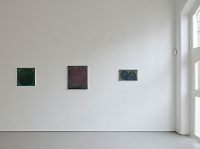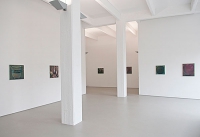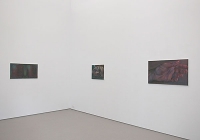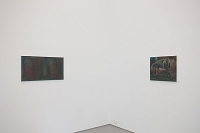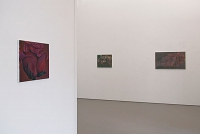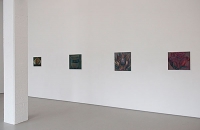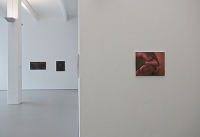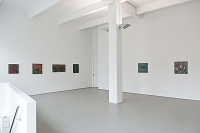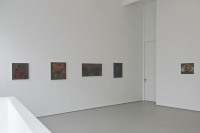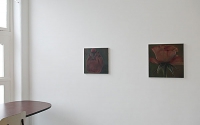Laughing Out Loud
A wealth of means for digital communication allows me to get in touch constantly with fellow human beings, yet never or rarely does this lead to an improvement in the actual contact. I doubt that I’m the only one who feels this way: LOL!
Laughing is a form of contact, but it can also be a sign of timidity.
Laughing loudly is a form of shameless behavior. But laughing can also give rise to shame when someone is being laughed at, or when ‘what’s there to laugh at?’ is the response.
Happiness can be expressed with laughter, though ‘being happy is for the stupid’, I’m told. Does that mean the things I paint are stupid? After all, they make me happy.
The things I paint are visually and associatively interrelated. They represent something that implies life, or the promise of life. Being perishable, however, they do involve decay and danger as well. They have a limited ‘shelf life’; their beauty and usefulness will not outlast the average life expectancy of a person.
The living and lifeless things that I paint are situated beyond any context; they are portrayed in isolation and in an objective way, that is to say as objects. The shapes are heavy, clear and recognizable, sometimes geometric. The entire surface of the canvas is saturated, full of paint. Any sense of action is absent, and yet every painting, to me, is an implosion of turbulence—desires and memories, sorrow and drunkenness. Every painted object withdraws into itself; each thing has just enough legroom to exist. Only the essentials remain: just enough food and water, a cup to drink from.
The group of works is fairly dark in terms of color. Dark colors intrigue me, because they force the viewer to look more closely: the eye needs to focus in order to see what is happening.
The work is a plea for observation. I try to create light with dark, dull colors. I investigate just how dark and dull the color can be, without driving the work to its death. In twilight or backlit situations, color is nearly absent. The type of light created then, when you have to squint to get a better look at things, kept on coming to mind as I painted.
As a child I always wanted to be able to draw a rose: not a flower, but a rose.
EK STAAN EN VERKYK MY AAN DONKERROOI ROSE (I stand and stare at dark red roses), wrote the South African poet Boerneef (1897-1967). A rose is not my favorite flower, but it does happen to be an archetypal kind of flower. That idea of the primal, of an ancient existence, is the essence of this group of paintings. I wanted to give shape to an abstraction that lies behind this seemingly matter-of-fact existence.
Just as an elephant seal undergoes annual molting, I am subject to a self-portrait once a year. And each year I paint myself from a different perspective: frontally, in profile, from behind, with closed eyes, in a reclining position. By doing this I register my manner of painting from one year to the next, and thus record the lapsing of my time.
translation: Beth O’Brien
